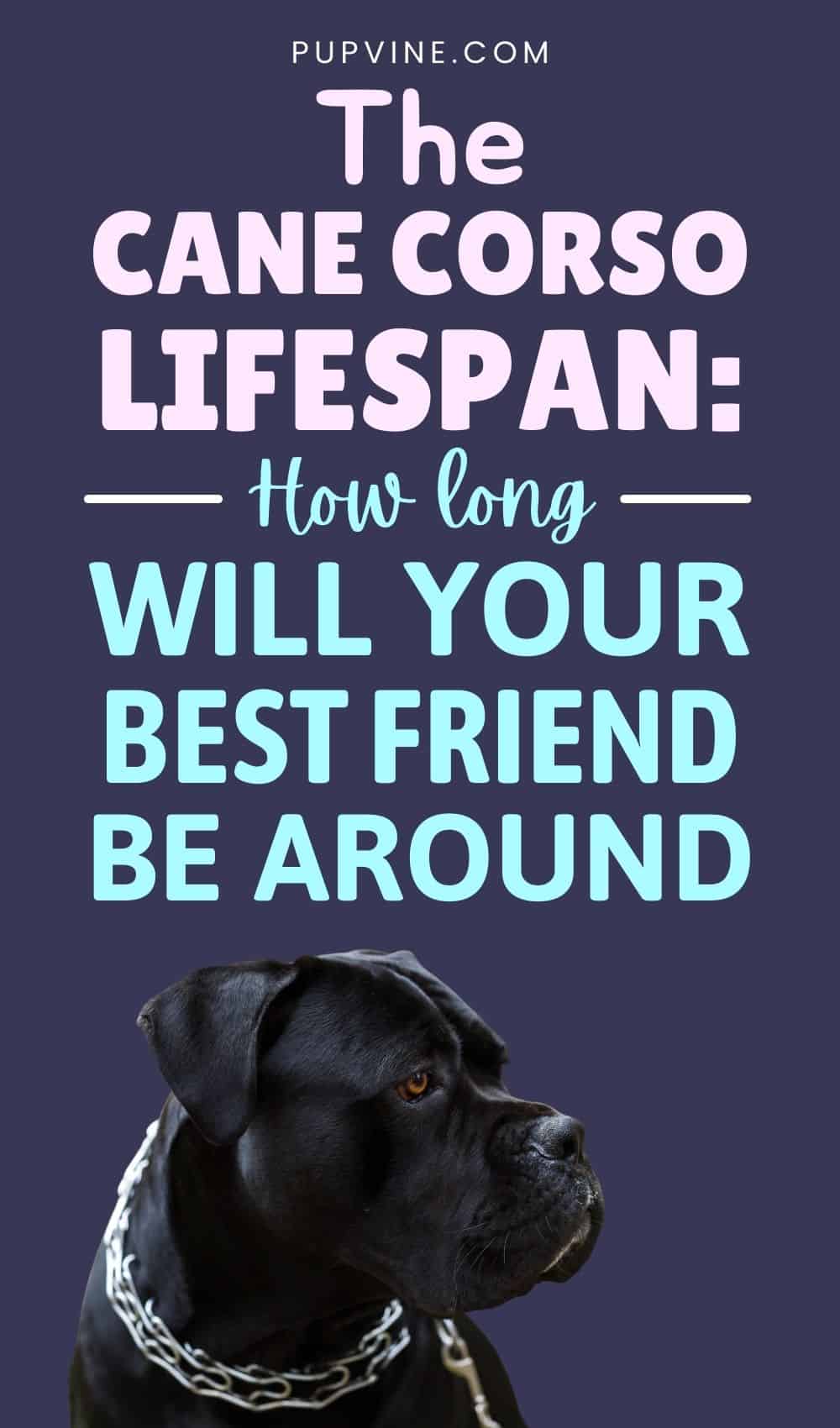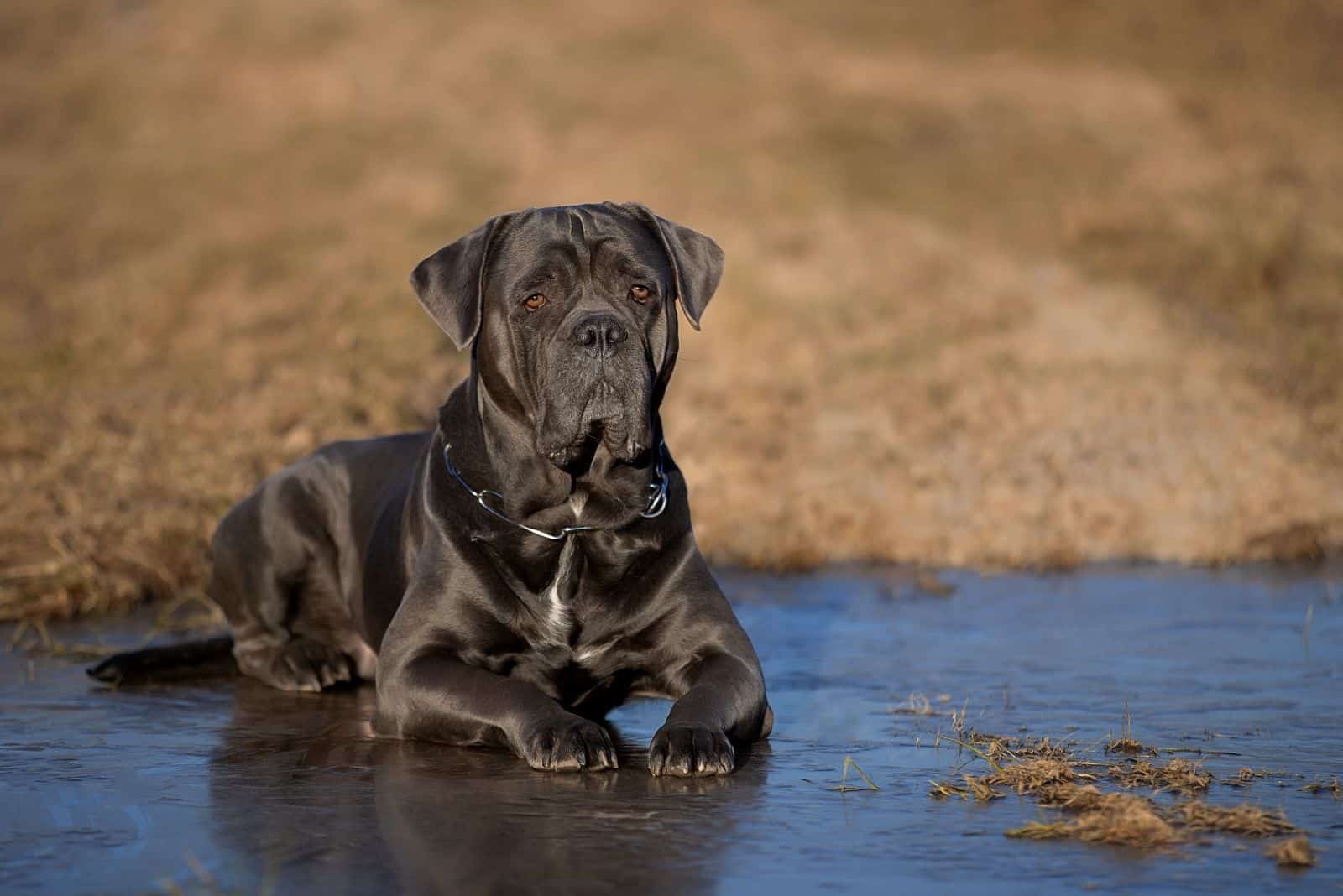The Cane Corso, also known as the Italian Mastiff, is a breed of dog that originated in Italy (i.e., Southern Italy).
Smart, trainable, and of noble bearing, Cane Corso dogs are perfect protectors.
The Corso’s lineage goes back to ancient Roman times, and the breed’s name can be translated from Latin as “bodyguard-dog.”
They are also used as guard dogs and police watchdogs.
The word “cane” is Latin for dog and derives from the word “canis.” The word “corso” may come from “cohors,” meaning bodyguard, or from “corsus,” an old Italian word meaning sturdy or robust.
Corsi are intelligent, loyal, and profoundly loyal to their humans, but are also assertive and willful and can end up owning an unwitting owner.
As with any other big guardian dog, responsible breeding and early socialization with people and other dogs are crucial.
If you have been wondering, “what is the lifespan of a Cane Corso?” we have the answer. But first, let’s see what makes these beautiful, purebred dogs so special.
History
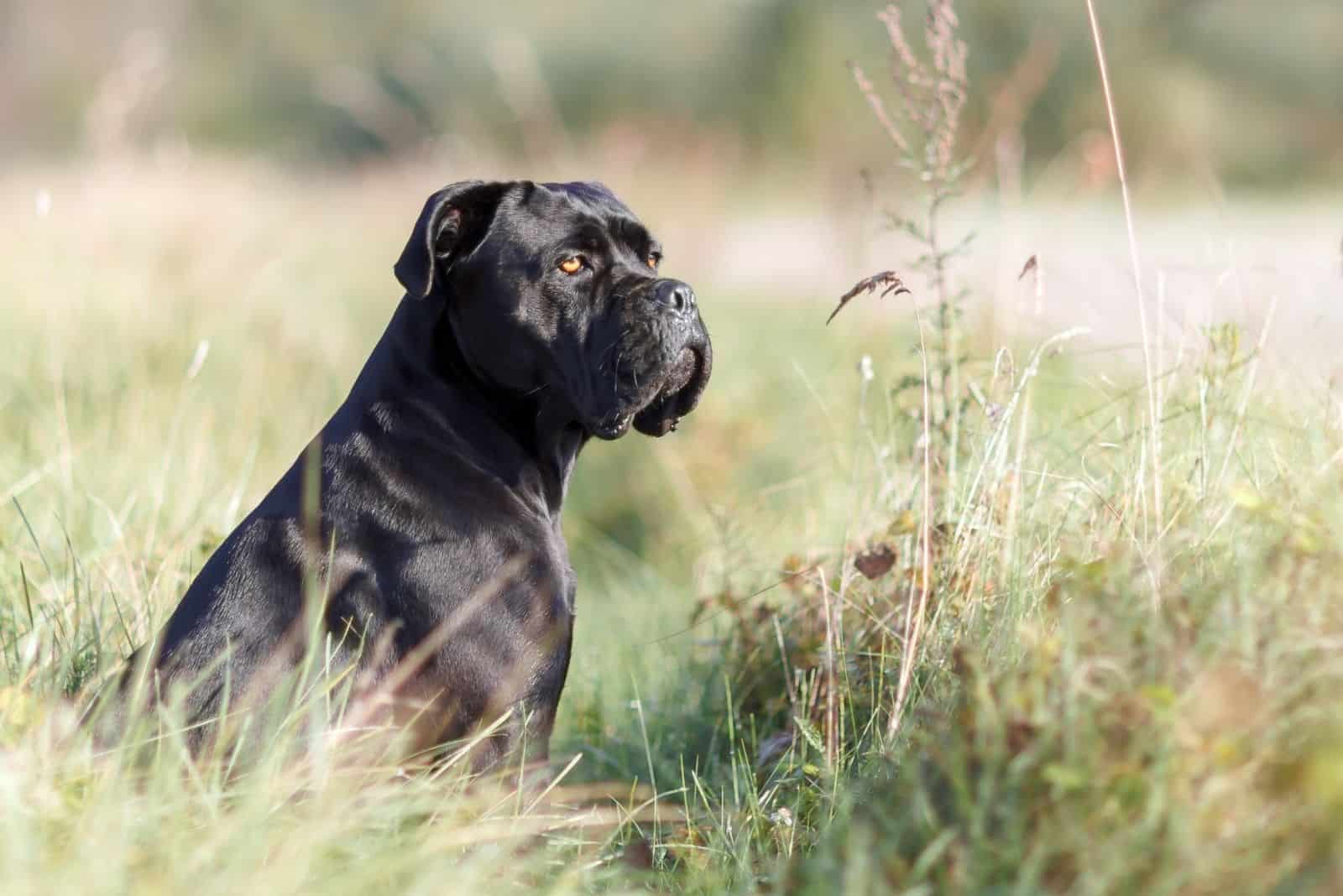
This breed belongs to a subcategory of working dogs called molosus dogs, or molosers, named for the Molossi, an ancient Greek people thought to have bred giant, big-boned guardian Mastiff type dogs.
At the height of the Roman Empire, the legions brought molosers back to Italy and bred them with native Italian breeds.
The Corso is said to descend from Roman war dogs. He is more lightly built than his cousin, the Neapolitan Mastiff, and was bred to hunt game, guard property, and be an all-around farmhand.
With the dissolution of the Western Empire in the fifth century, Italy’s legions and their dogs were out of work. Corsi adapted to civilian jobs like wild boar hunting, farming, livestock droving, and guarding farmsteads and hen houses.
The breed declined and came near extinction as farming became more mechanized, but starting in the 1970s, dog fanciers worked to rebuild the Corso.
The Society Amatory Cane Corso was formed in 1983, and the Federation Cynologique Internationale recognized the breed in 1996.
The first Corso import arrived in America in 1988. Michael Sottile imported the first litter of Corsos to the United States, followed by a second litter in 1989.
Eventually, the breed club sought recognition from the American Kennel Club (AKC), which was granted in 2010. The breed is now governed by the Cane Corso Association of America.
Because of their muscular appearance and unyielding loyalty, these dogs are often chosen to create crossbreeds with other dog breeds. Here are some of the best Cane Corso mixes you can come across:
• Cane Corso German Shepherd mix
The Cane Corso’s Main Traits
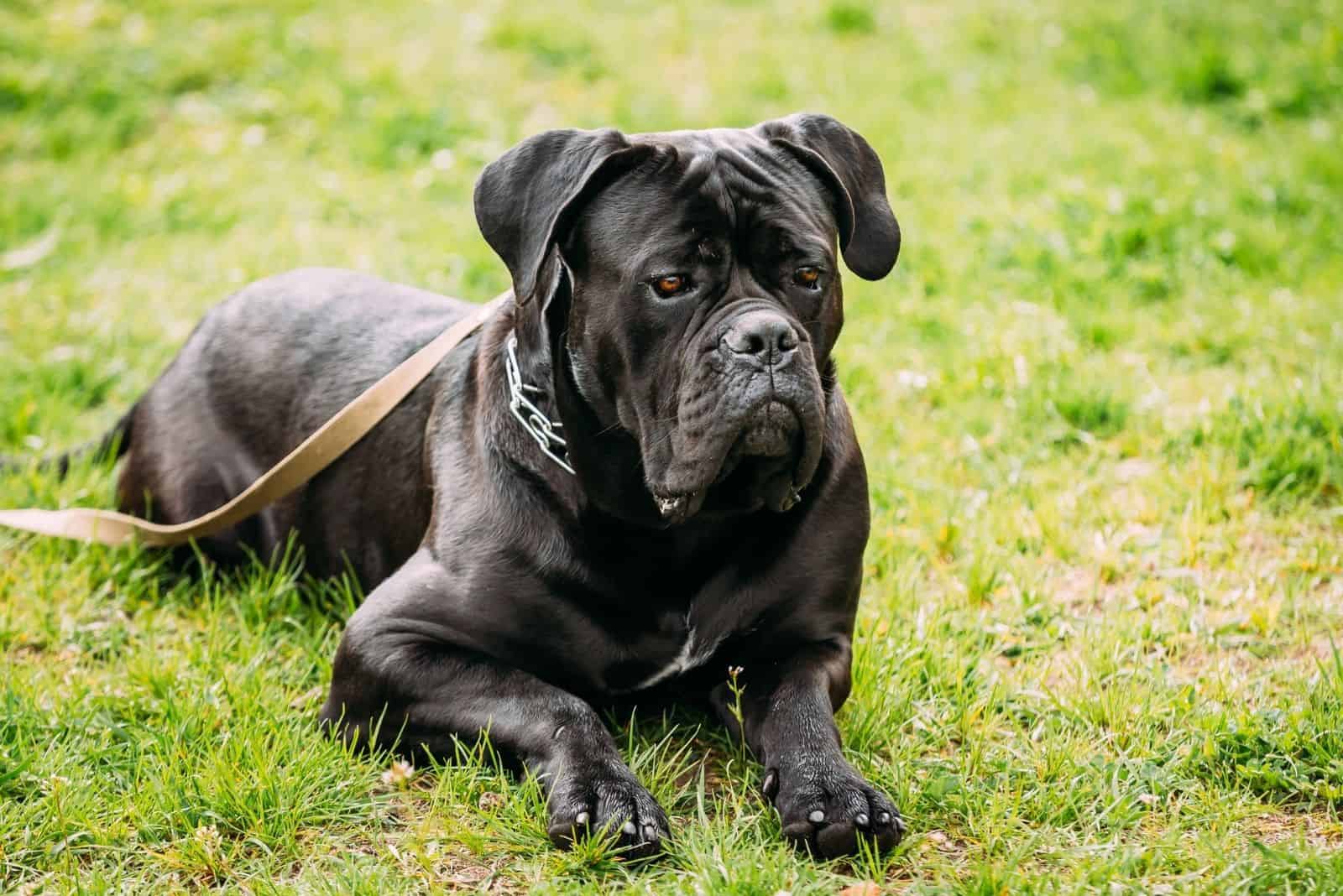
The Cane Corso is a serious dog breed for a person who is equally serious about having a dog as a companion and who can provide him with the firm and loving guidance he needs to become a great dog. He is a family-only dog.
Don’t expect him to buddy up with everyone he meets (like the retriever, for example). He has no interest in people or other animals outside his family, but those within the family will have his undivided loyalty and protection.
Size
They go from small Cane Corso puppies to very large dogs quickly. The height of an average Cane Corso is 27 inches, and they can typically weigh up to 120 pounds.
It is important to know that some of them have a hearty appetite and can quickly slip into the overweight or obese zone if they are not given a proper amount of exercise.
You can look at the Cane Corso growth chart for more details.
Physical Features
This dog has a strong skeleton; it is muscular and athletic and moves with considerable ease and elegance.
Corso’s Head
The Corso’s head is molossus, large, and its total length reaches approximately one-third of their height at the withers. Planes of the skull and muzzle are slightly convergent; they are not parallel.
If we talk about the skull – viewed from the front, the skull is wide and slightly curved; its width is equal to its length.
From the side, a prominent arch begins above the eyes and then flattens backward toward the occiput. Viewed from the top, it has a square appearance due to the zygomatic arches and powerful muscles swathing it.
Corso’s Eyes
The Corso’s eyes are of medium-size, almond-shaped, not round or bulging. Tight-fitting rims are preferred, with only a minimal amount of haw being visible.
Eye color – For dogs with black muzzles (coat colors of black, fawn, or red, and these colors brindled), dark brown eyes are preferred.
With gray muzzles (coat colors of gray, fawn, or red and these colors brindled), lighter shades are approved.
Pigmentation of the eye rims is complete, and the pigmentation of the eye rims should match the pigment color of the dog.
Corso’s Ears
The Corso’s ears are set well above the cheekbones. They may be cropped or uncropped. If cropped, it is in an equilateral triangle.
If uncropped, they are medium-sized, triangular in shape, held tight to the cheeks, and do not extend beyond the jaw bone.
The nose is large with well-opened nostrils, and the nose’s pigment will match the pigment color of the dog. Dogs with black pigment have black noses; gray pigmented dogs have gray noses; pigmentation is complete.
The nose is an extension of the topline of the muzzle and does not protrude beyond nor recede behind the front plane of the muzzle.
Corso’s Muzzle And Lips
Muzzle – Very broad and deep, with a width almost equal to its length, reaching approximately one-third of the total length of the head; the depth of the muzzle is more than 50 percent the length of the muzzle.
The top and bottom muzzle planes are parallel, and the nose and chin form a perpendicular line. Viewed from the front, the anterior face should look flat and form a trapezoid that’s wider at the bottom.
The muzzle is not overly narrow or snipey.
Their lips are rather firm. Upper lips hang moderately, and they join under the nostrils to form an inverted “U.”
Pigmentation matches the color pigment of dogs. Dogs with black pigment have black lips; gray pigmented dogs have gray lips.
Do Cane Corsos Shed?
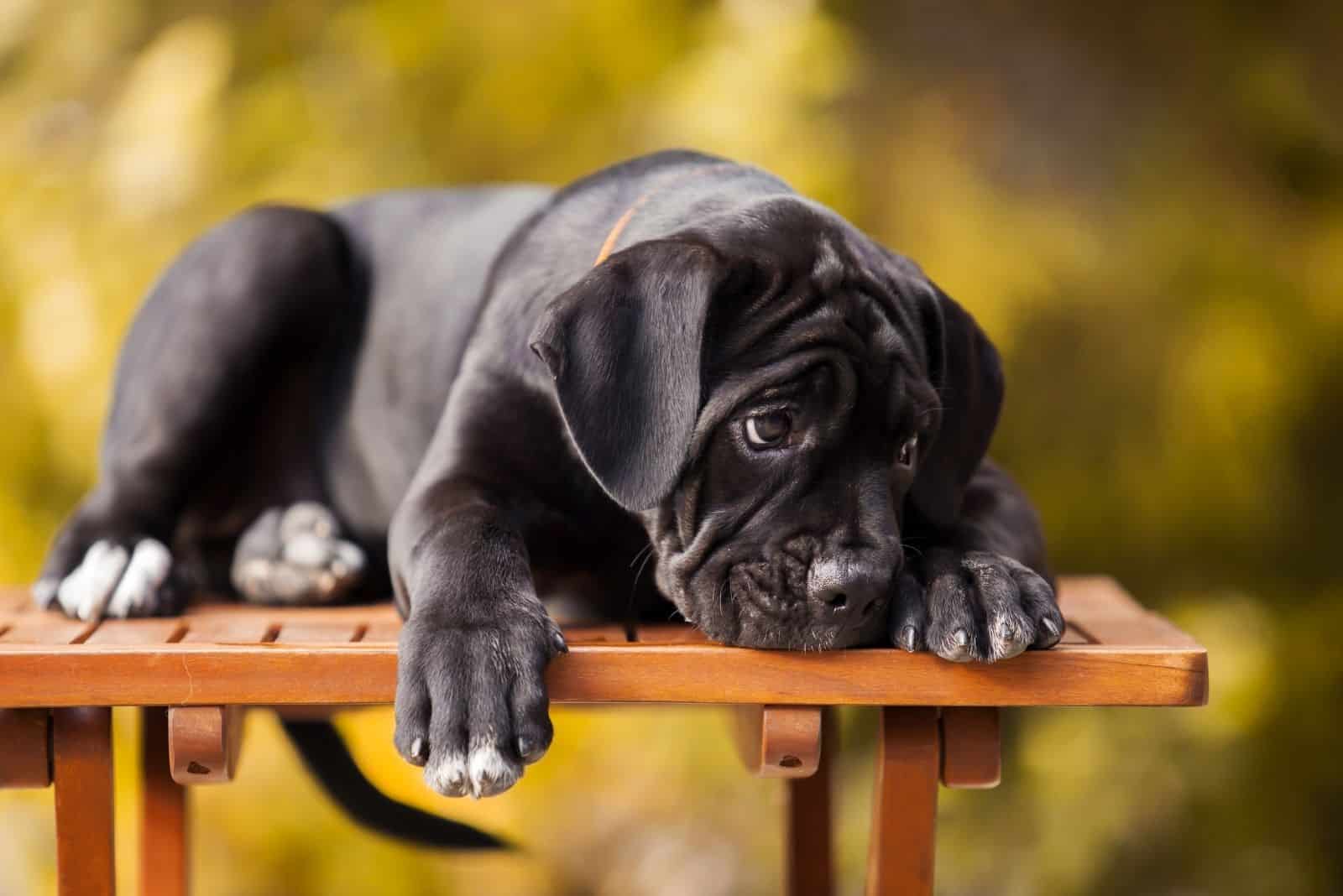
These dogs have short coats; stiff, shiny, adherent, and dense with a light undercoat that becomes thicker in cold weather.
Acceptable colors are black (black brindle), lighter and darker shades of gray, lighter and darker shades of fawn, and red.
Their coats are shed twice a year, and it is advisable to get them vacuum-cleaned, with a special dog vacuum attachment. Also, bathe your dog when necessary.
Personality
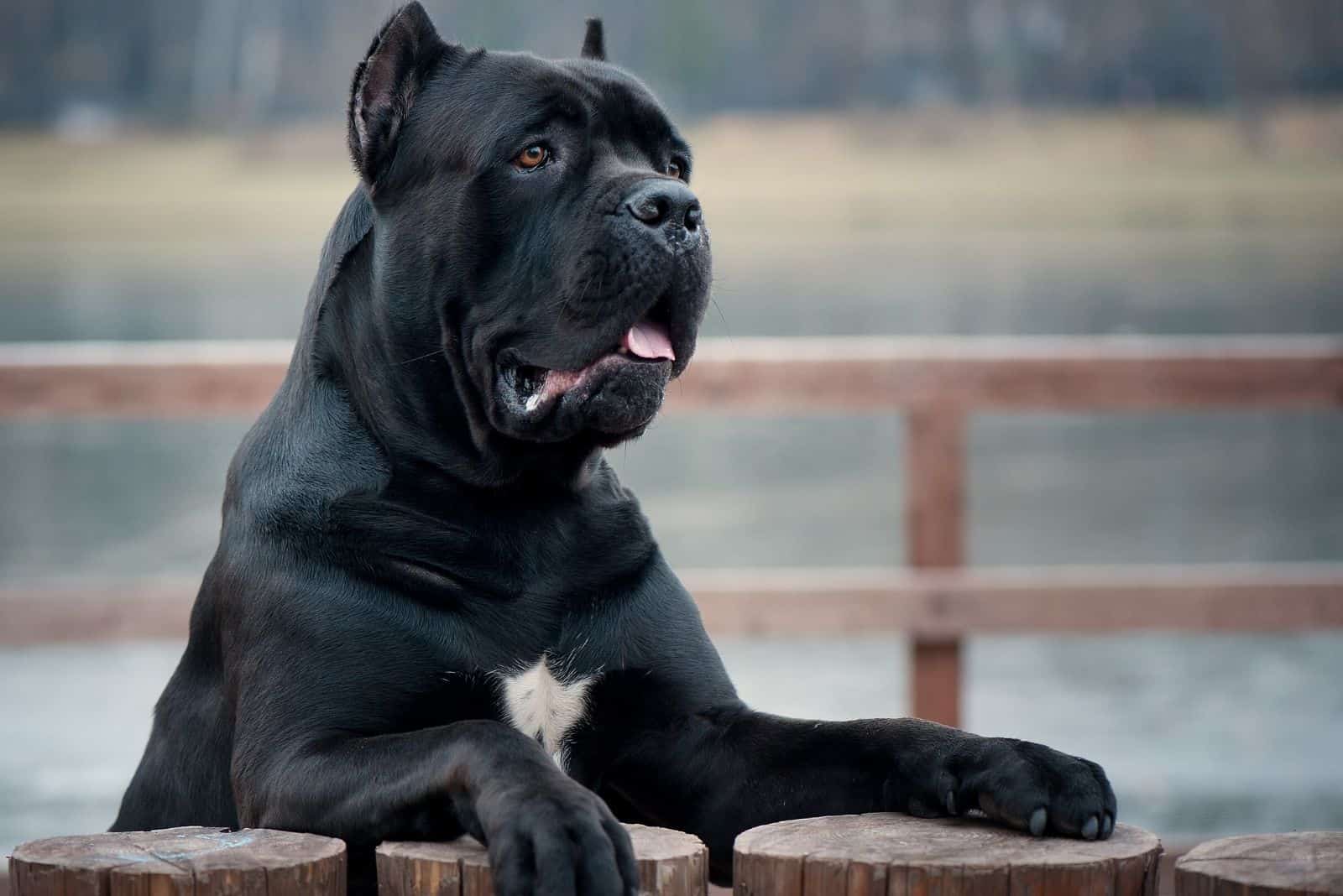
Cane Corso dogs have magnificent personalities with a vigorous temperament. This type of temperament can be a double-edged sword. They are a brave, strong, and very dominant breed.
The Corso is highly intelligent, too. Combine that with his bossy nature, and it’s easy to see how he could come to dominate the household without firm leadership and boundaries.
He will test you to see how far he can go.
It’s important to let him know from the start what the rules are and to ensure that all family members understand the rules as well. Obedience training will keep them from becoming the boss in the household.
On the other hand, dogs with this strong personality may be harder to manage for a first time dog parent. Treats can be an important aid in training, but giving too many can cause obesity.
Firm leadership does not mean hitting the dog — ever. That not only sends the wrong message but can also be dangerous with a large, powerful dog.
The sensitive Corso understands tone of voice and responds well to praise and rewards when he has done something you like. Being calm and consistent will allow your dog to relax and know who is in charge.
Are Cane Corsos Dangerous?
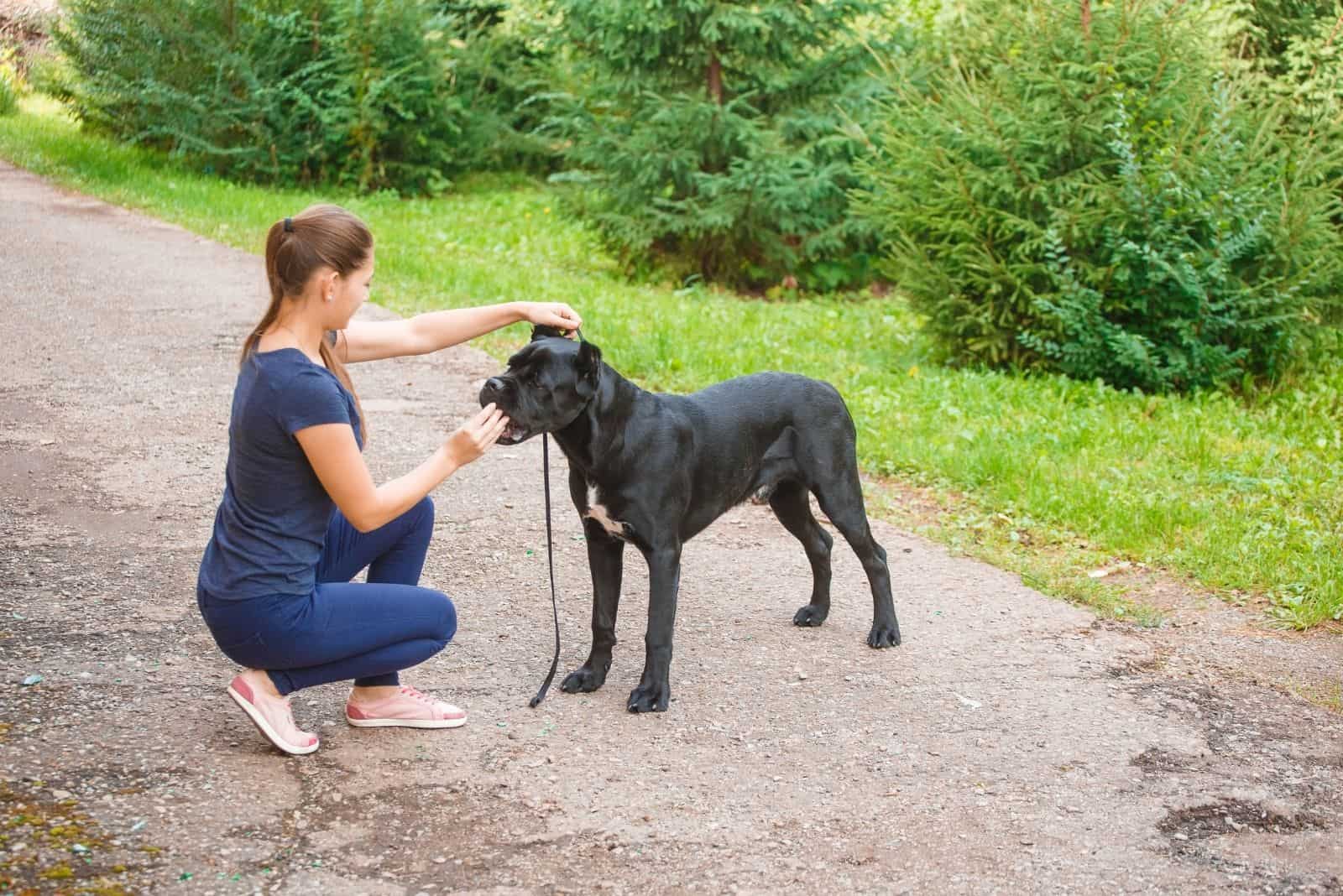
If they are in the wrong hands, yes, both male and female pups of this breed can become aggressive and be a danger to the public. Any dog can turn aggressive, and it is most often the fault of poor training.
With a confident, consistent owner who provides good leadership, the Corso can be an excellent family dog who is never inappropriately aggressive.
Corso’s Socialization
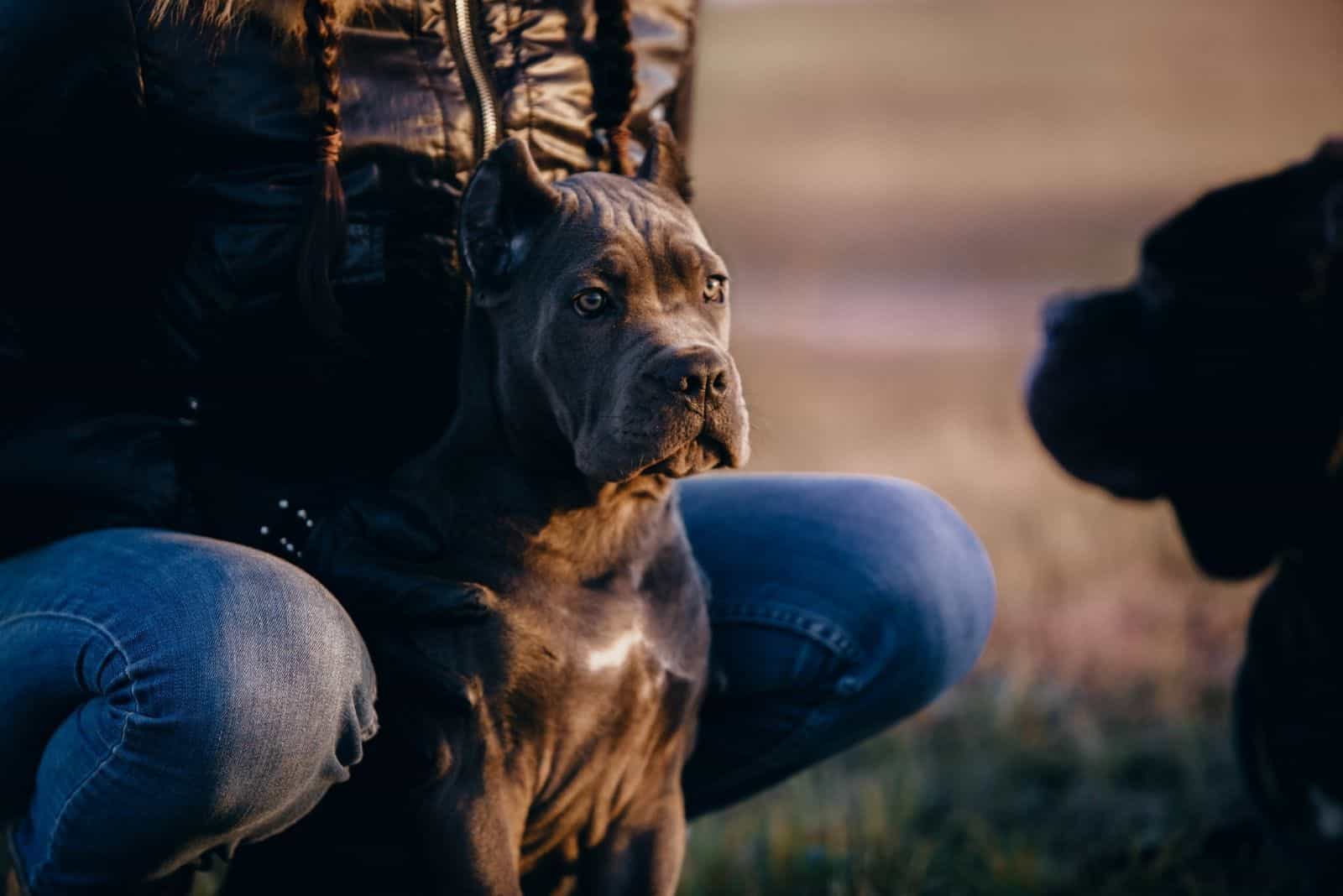
Like other dogs, the Corso needs early socialization, ideally before he is four months old.
Socialization helps to ensure your Corso puppy grows up to be a well-rounded dog, unafraid of strangers, children, other animals, or being left alone when necessary.
Without a lot of experience in the world, he can easily become fearful or aggressive.
The more you socialize him, the better able he will be to determine what’s normal behavior and what actions require him to respond in a protective way.
Although the Cane Corso dogs are considered to be a prestigious possession, they belong to the working class.
So it is very important that they are made to perform some kind of physical activity for at least an hour every day.
Exercise should not only be physical but also mental to avoid boredom. In other words, give this dog a job.
He’s unwilling to just lie around all day and will find his own “work” to do if you don’t provide it: usually running the fence and barking at passersby, digging holes, or chewing up your furniture.
If you have a farm or ranch, he will help you with the livestock; otherwise, get him involved in a dog sport such as agility, dock diving, tracking, etc.
However, never allow a Corso to run loose. A solid, secure fence is a must.
The Corso may get along with other dogs or cats if he is raised with them, but he will likely view strange animals as prey.
This is another instance in which socialization is a must. Your Cane Corso should learn from an early age to remain calm in the presence of other dogs.
If you get a second dog, either another Cane Corso or a different breed, it is best to choose one of the opposite sex.
How Much Does A Cane Corso Dog Cost?
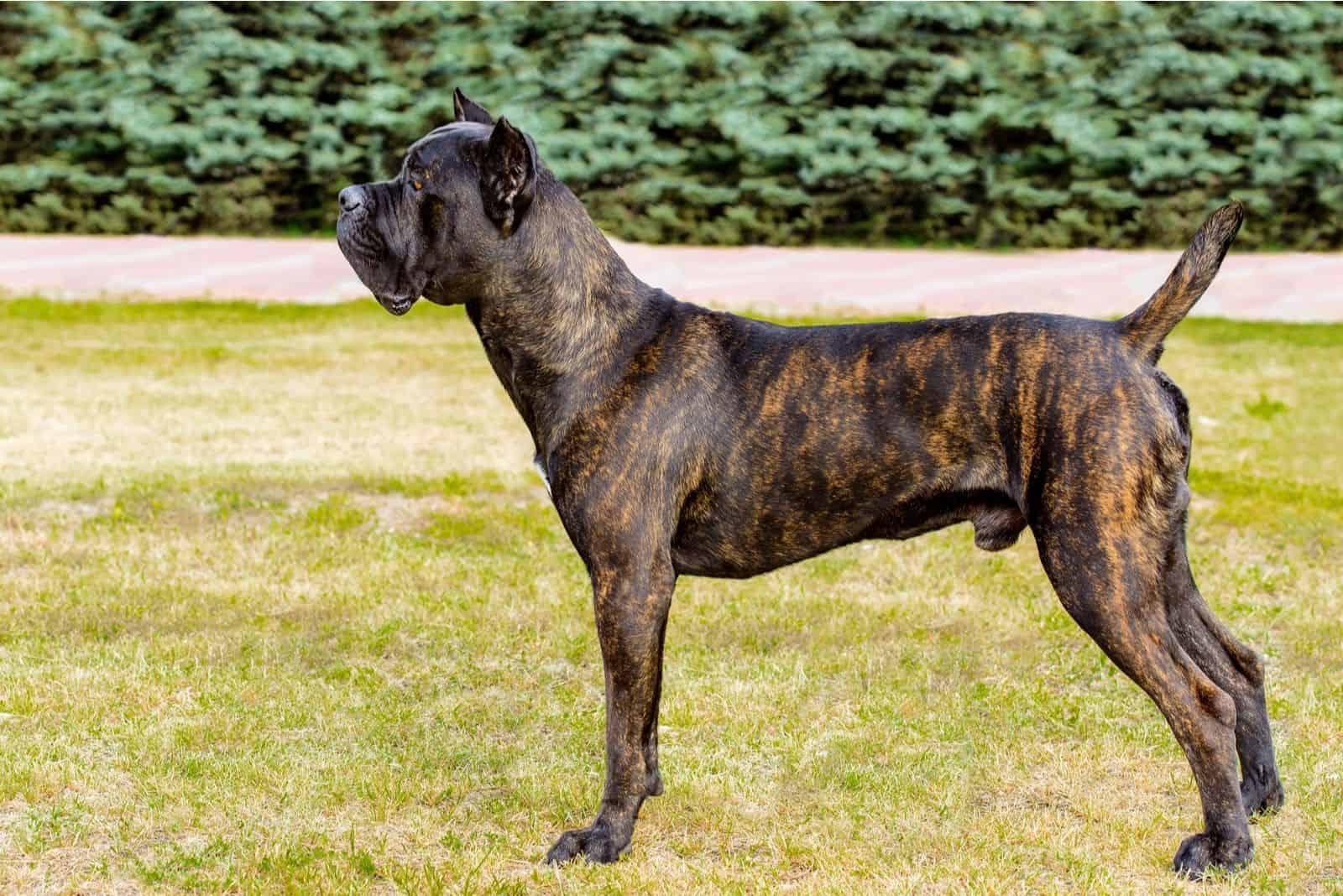
A Cane Corso puppy will usually cost between $900 and $2,000. Cane Corso puppies with high quality, good family records, or are raised to be professional dogs are offered at a much higher price.
If you decide to buy this dog, make sure you buy it from breeders who follow all ethical standards.
However, if you are not interested in a puppy, there is always the option of taking on an adult Cane Corso. Check rescue centers near you and make one dog happy.
How Long Do Cane Corsos Live?
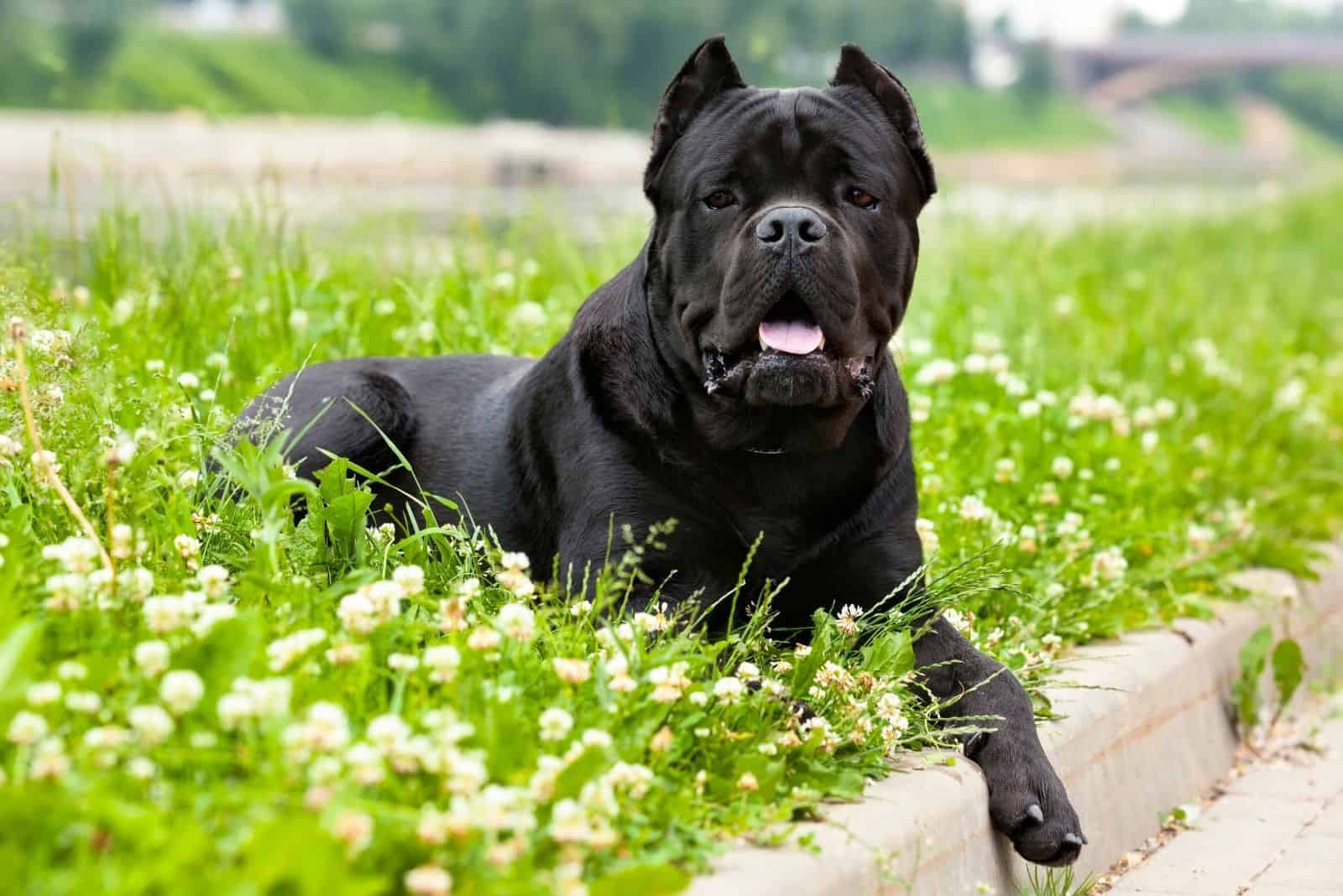
“How long can Cane Corso Dogs live?” is one of the tougher questions many pet owners ask themselves.
We know that these dogs cannot live with us forever, so it is important that we understand the perils of old age and the average life expectancy of the Cane Corso.
Many factors affect the longevity of Cane Corso Italiano Dog Breed, including size, breed, and the general health of the animal.
These factors can help answer the questions on most Cane Corso pet owner’s minds.
The Cane Corso average lifespan is around 10 to 12 years, similar to most large or giant breeds (Rottweiler 10–12 years; Great Dane 8–10 years; Bulldog 10–12 years).
However, the overall life expectancy of the Cane Corso can be more than its average lifespan if you provide them with a healthy lifestyle and enough physical activity.
A Dog’s lifespan depends on multiple factors, including lifestyle, diet, training, and proper healthcare. Your dog will stay healthy and live longer if given a proper diet of high-quality dog food.
Common Health Problems Of The Cane Corso
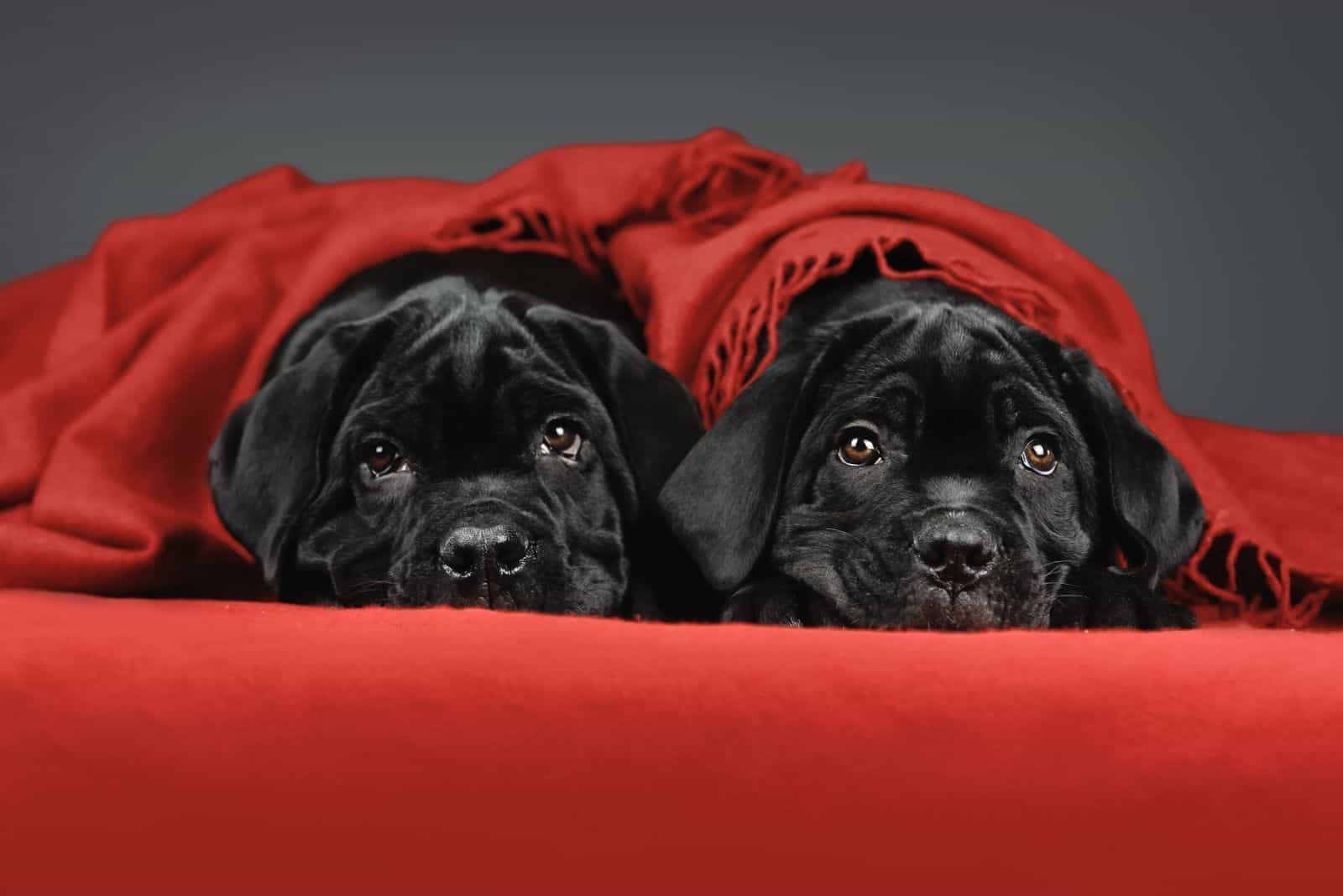
Corsos are generally healthy, but like all breeds, they’re prone to certain health conditions. There are some genetic or inherited health problems and risks for the Cane Corso. The most common are:
• Hip dysplasia
• Gastric torsion (or bloat)
• Allergies
Hip dysplasia – with hip dysplasia, the balls and sockets of the hind legs don’t fit one another properly. The main symptom of this disease is discomfort in the hind legs, such as stiffness and lameness.
Luckily, it can be treated easily with corticosteroids or anti-inflammatories. Dogs with hip dysplasia can also be given dog food that is nutritionally supplemented.
Ectropion and entropion
Ectropion is an eye disorder in which the lower eyelid rolls out or droops. It can affect one or both eyelids. It can happen due to nerve injury or corneal injury in the eye.
Entropion is another eye disorder, but in this case, your pup’s eyelids roll inwards.
Because of the inward rolling of the eyelids, it causes many issues such as pain, corneal ulcers, perforations, and the development of figments on the cornea due to the eyelids and lashes rubbing against it.
Gastric torsion (or bloat)
This is another serious medical condition that is common in large dogs as they have a large appetite. It is a disorder of the digestive system in which the stomach is affected in two ways.
The first is through bloating of the stomach, which means that the stomach fills up with a mixture of gases, froth, and fluids.
The second is torsion. Torsion is caused by the bloating in the stomach, in which the stomach is twisted inside the abdomen.
They can occur at the same time or one after another. Since Corsos are prone to bloat, a dog owner should avoid overfeeding and space their meals throughout the day.
Allergies
This breed also tends to have skin allergies like deep pyoderma, elbow hygroma, skin fold dermatitis, and chin folliculitis.
The most common skin allergy is demodectic mange (approximately 37% of Cane Corsos have this allergy).
Factors That Determine The Lifespan Of A Cane Corso
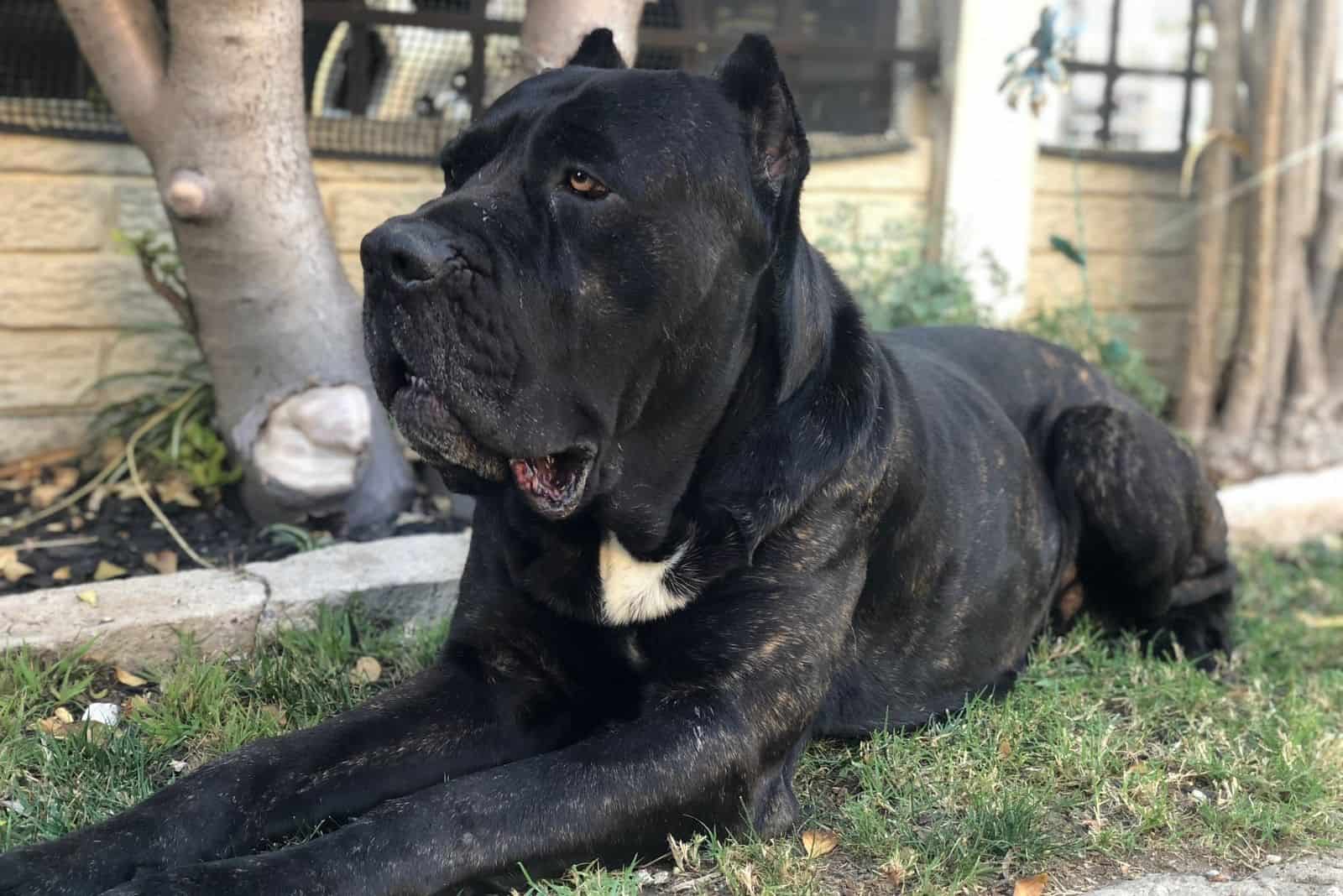
This working breed needs plenty of physical activity to stay in shape. Regular physical activity and exercise keep a dog healthy and fit, which increases its life expectancy.
A dog that doesn’t get any exercise may easily become overweight, leading to a shorter lifespan.
Also, spend at least 20 minutes a day working with your dog on these types of activities: learning tricks, practicing obedience skills, etc.
You can determine the lifespan of your pup by its diet. Home-made foods work best for your Cane Corso. It can be meat, vegetables, or a combination of both.
You can look at the Cane Corso feeding chart to better understand the eating habits of your pooch.
Feeding your Cane Corso (or any dog) the freshest whole-food diet you can afford (trying to eliminate fillers, grains, or inflammatory proteins such as chicken) can go a long way to decrease health issues and increase longevity.
Human foods such as papaya, guava, plantains, figs, and artichokes can help you supplement your Cane Corso’s diet with the necessary nutrients it requires throughout the day.
Many dog owners love feeding their Cane Corsos raw diet, and this type of diet does seem to better the health of a dog – if done correctly.
Proper healthcare and regular veterinary visits are necessary to maintain the lifespan of your Cane Corso.
Early diagnosis and treatment of any disorders not only prevents your Cane Corso from experiencing pain but also improves its lifespan.
You also need to be prepared for the amount of care and significant bills that can go along with owning a large dog. The fact is that surgery is more expensive for a big dog than a small one.
Relationship With Owners and Children
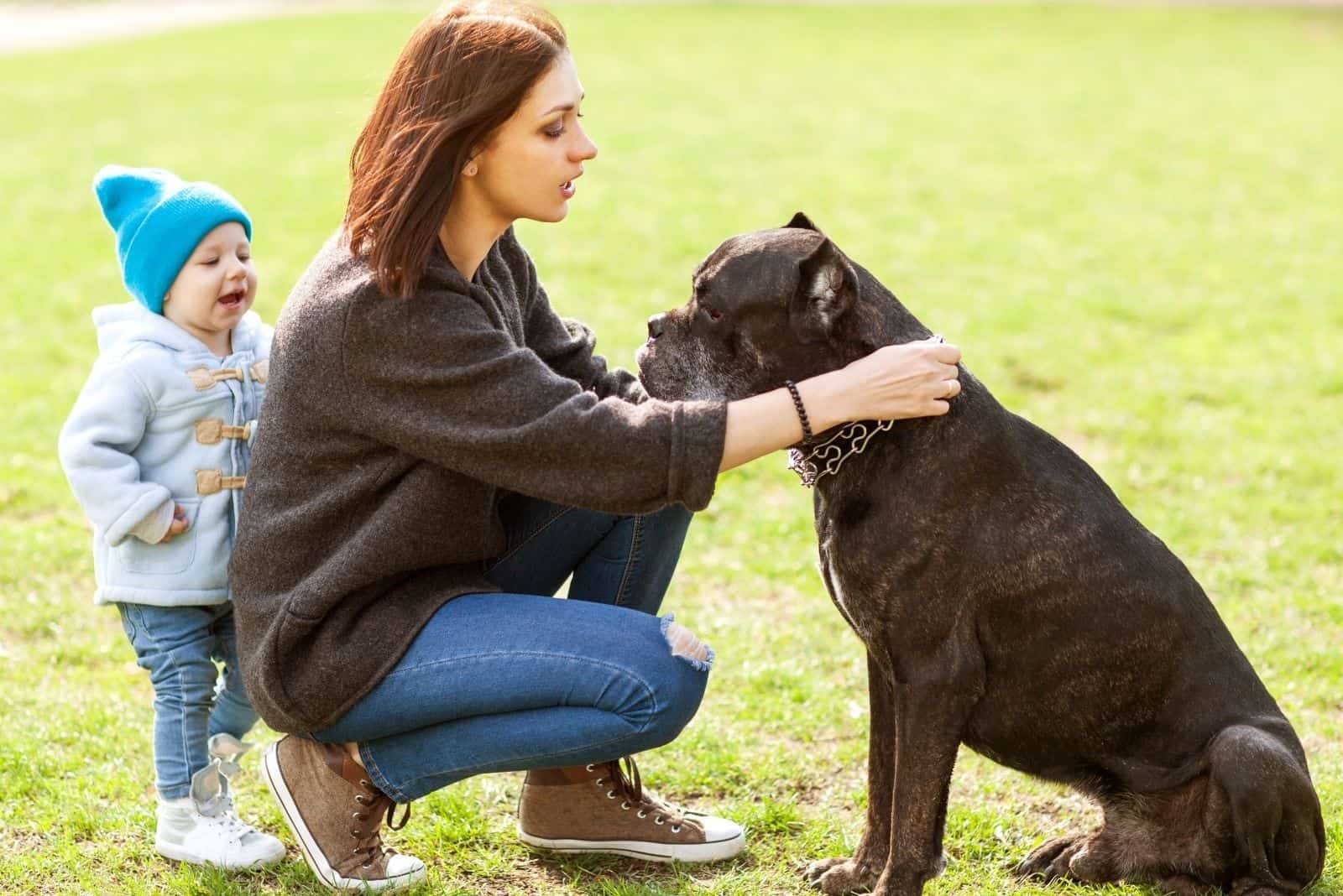
Cane Corso dogs are quite submissive and perfect family dogs. They tend to communicate with their family by snorting or making woo-woo sounds.
However, if you are looking at getting a dog for the first time or are an inexperienced dog owner, Cane Corso dogs are not recommended for you.
They can turn out to be aggressive if not trained properly. Hence, it is very important to begin their training as early as possible.
When he is raised, trained, and socialized properly, the Corso can be loving and protective of children.
It’s important, however, that puppies and adult dogs not be given any opportunity to chase children and that kids avoid making high-pitched sounds in their presence.
Running and squealing may cause the Corso to associate children with prey. Teach your child never to approach any dog while he’s eating or sleeping or to try to take the dog’s food away.
No dog, no matter how loving, should ever be left unsupervised with a child.
Be aware that not everyone you meet and not everyone who enters your home will be comfortable around the Cane Corso. After all, it is a huge dog.
Conclusion
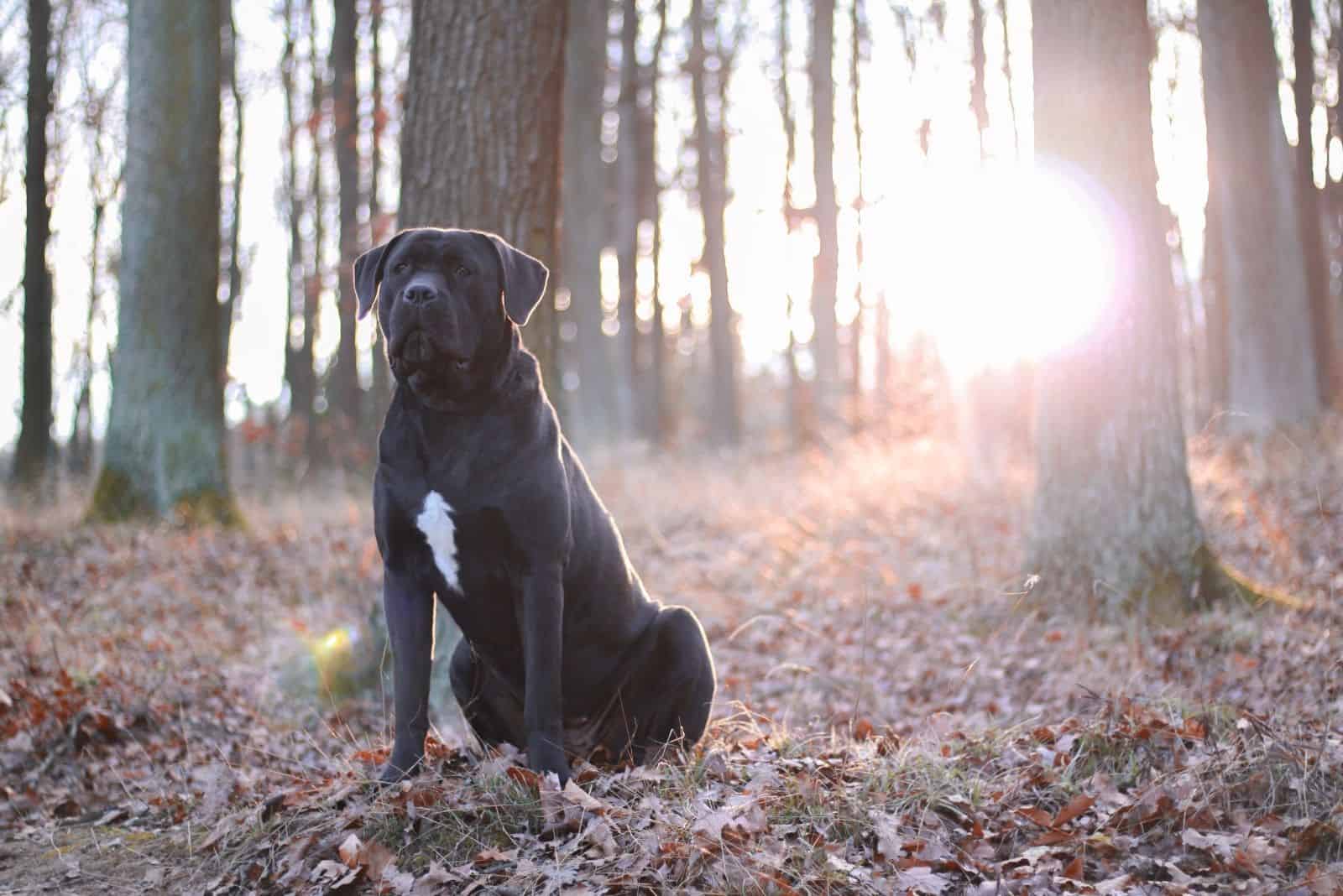
The Cane Corso is a quiet, sensitive dog that always has an air of seriousness. They love their family and are fiercely protective of them.
Cane Corso dogs are smart and trainable. They are confident and always up for challenges. It takes a lot of effort to train them, but your Corso will respond to you with love.
The lifespan of this breed is around 10 to 12 years. But everything depends on you, his owner. The way you train them, feed them, and work with them all affect their lifespan. Be a persistent owner and love your dog.
